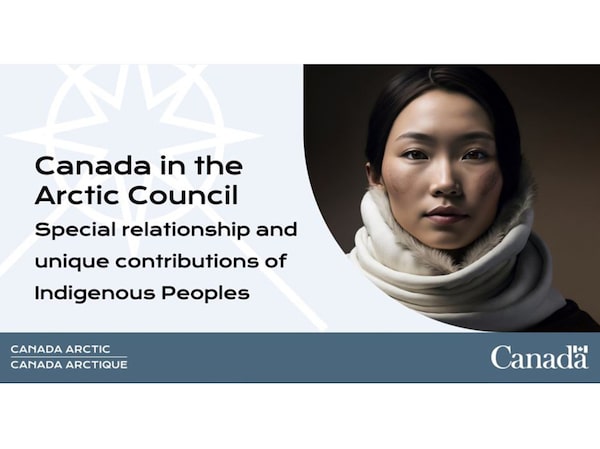
The Department of Global Affairs is apologizing for posting a picture generated by artificial intelligence to represent an Indigenous woman on social media.Supplied
The Department of Global Affairs is apologizing for posting a picture generated by artificial intelligence to represent an Indigenous woman on social media.
One of the accounts Canada’s Foreign Affairs Ministry runs on X, formerly known as Twitter, is called Canada in the Arctic.
Last week, it posted a statement about how the Canadian Arctic is home to 150,000 people “and more than half of them are Indigenous.” This was accompanied by a graphic featuring a woman with her face wreathed in fur and a scarf.
After The Globe and Mail contacted Global Affairs to inquire about this image, and mentioned some said the image featured on X appeared to be AI-generated, the department deleted the post.
“Global Affairs Canada extends its deepest regrets to the Inuit and Indigenous communities who were misrepresented in this image. This post has been deleted from the account and an apology was issued,” Pierre Cugen, spokesman for Global Affairs, said in a statement.
“We will ensure that future representation is handled appropriately, with errors such as this avoided.”
The department said it relied on artificial intelligence to produce the picture.
“An image created by artificial intelligence was wrongly used to represent an Indigenous individual on the @CanadaArctic account,” Global Affairs said in a follow-up post on X. “GAC acknowledges this error and apologizes to the Indigenous Peoples who were misrepresented in this image.”
The department did not immediately respond to follow-up questions about the extent to which the ministry relies on artificial intelligence (AI) or whether it has rules in place to govern its use.
Alethea Arnaquq-Baril, an Inuk filmmaker who is currently producing a TV series, responded to the original Global Affairs post by noting the challenges of using artificial intelligence to generate or modify images.
“I am Inuk and every AI generator I’ve used with my photos makes me look Asian. So weird to use an AI image for this,” she said in a post on X.
Reached Thursday, Ms. Arnaquq-Baril, said she questioned why Global Affairs would resort to AI for images of Arctic people.
“There are many Inuit – even who live in Ottawa – who would be happy to model for a photo like that.”
She said Global Affairs’s gaffe reflects the challenges of AI technology.
“Working in film and television, it’s exactly some of the issues that artists are facing across the board right now: replacing actual humans with AI is something that needs to be thought about carefully.”
Nunavut MP Lori Idlout, who is the NDP critic for Indigenous Services, Northern Affairs and Crown-Indigenous Relations, said Thursday there is absolutely no justification for the use of the AI-generated image by Global Affairs.
“Unfortunately, it is just another indication of this federal government not caring about the importance of First Nations, Métis and Inuit,” she said.
Global Affairs should hire more Indigenous people to work on materials and promotional items, she added.
She said Inuit are a beautiful people and many women could have been featured on the social-media posting.
“They could have used any amazing Inuit out there; our current Governor-General is Inuk,” she said.
Inuit Tapiriit Kanatami (ITK), a non-profit organization that represents Inuit, says most live in 51 communities spread across the Inuvialuit Settlement Region (Northwest Territories), Nunavut, Nunavik (Northern Quebec), and Nunatsiavut (Northern Labrador). The vast region is called Inuit Nunangat and encompasses 40 per cent of Canada’s land area and 72 per cent of its coastline, ITK says.
The Canadian government itself, through Global Affairs, has already raised concerns about the use of generative AI, where the technology is used to produce things such as text, images and audio.
In a Sept. 23 “global declaration on information integrity online,” Canada along with 30 other countries warned of the risk that AI-generated content could contribute to misinforming the public.
“The technology also holds the potential to challenge the integrity of the information ecosystem online with generative AI products making it increasingly difficult for public audiences to identify accurate information – as seen with biased AI-generated media, mass produced disinformation narratives in almost every language, and deepfakes.”